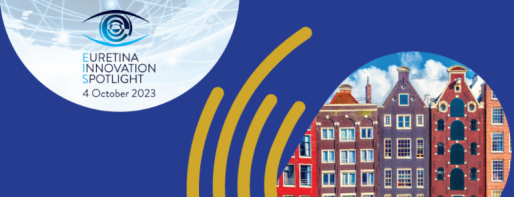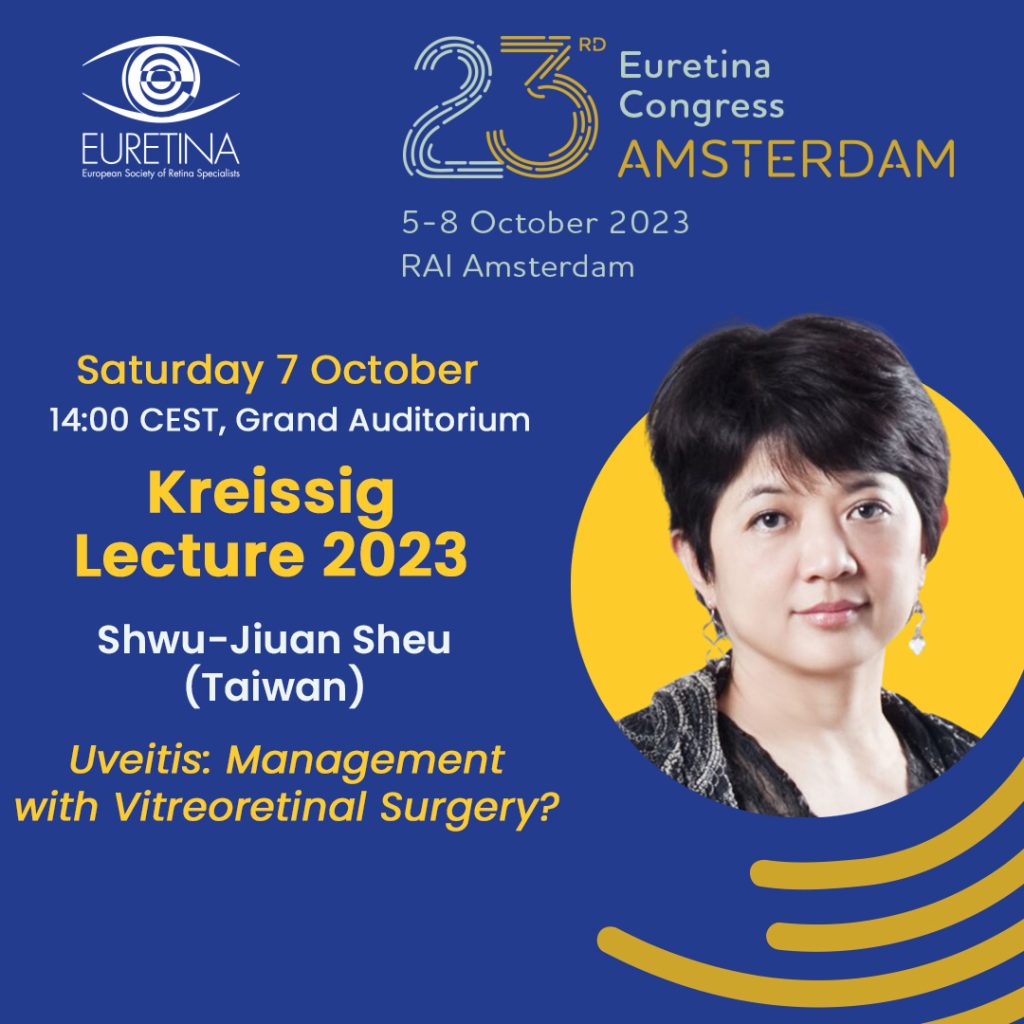In the 2023 Kreissig Lecture, Professor Shwu-Jiuan Sheu MD, will outline the potential advantages and pitfalls of employing vitreretinal surgery as a management strategy for uveitis. In this interview, she discusses the key points she will raise in her lecture.
What is driving the development of VR surgery as a management strategy for uveitis?
There are a number of factors at play. It is not simply advances in microincision vitrectomy (MIVS) – the development and upgrading of imaging diagnosis such as optical coherence tomography (OCT) and molecular diagnosis techniques are all helping to drive the development of VR surgery in the management of uveitis.
How can pars plana vitrectomy (PPV) be used for diagnostic and/or treatment purposes in cases of uveitis and how does it differ from other treatment options?
Diagnostic PPV is suggested to be employed in uveitis cases with the following conditions: atypical clinical presentations, rapid progressive course with no conclusive tests, non- or sub-optimal response with standard treatment and masquerade syndrome. Therapeutic PPV is indicated in the management of uveitis complications, including hypotony, epiretinal membrane formation, retinal detachment, and vitreous hemorrhage. Moreover, vitrectomy also helps to clear visual opacities and decrease inflammation in cases with persistent inflammation.
What are the main benefits/drawbacks of such an approach?
Diagnostic PPV helps to establish the diagnosis and start appropriate treatment before losing the eyes. All surgeries come with risk, especially in those associated with systemic risk factors. Sometimes, the patients’ condition did not allow surgery, and we must weigh the benefit and risk of the surgery for the patients. An overall complication rate of 54% has been reported in 20-gauge PPV in uveitic eyes, including hypotony, vitreous haemorrhage, retinal detachment, epiretinal membrane, and more than one half of the operated eyes developed cataract [Oahalou, 2014]. The complication rate after MIVS in uveitic eyes was reported to be 42%, including cataract (14.6%), rise in intraocular pressure (13.2%), vitreous haemorrhage (4.7%), hypotony (3.2%), retinal detachment (2.8%), epiretinal membrane (2.8%), and worsening of inflammation (0.9%) [Bansal, 2017].
How does the approach to vitreoretinal surgery differ based on the aetiology of uveitis?
Uveitis is a group of diseases with different aetiologies including autoimmune-related uveitis, infection, or masquerade syndrome. Management of uveitis starts with the establishment of a correct diagnosis. The diagnostic approach for uveitis should be stepwise, including personal living habit, medical history, followed by ophthalmologic examinations and systemic workup. Sampling ocular specimens such as aqueous or vitreous samples is needed in identifying the aetiology of uveitis, or clear visual opacities and decrease inflammation in cases with persistent inflammation even under aggressive medical treatment.
What precautions need to be taken in advance of PPV surgery for uveitis?
Achieving optimum control of inflammation before PPV is recommended for non-emergent therapeutic indications and complications of uveitis. However, recent indications are extended to include some active inflammation for diagnostic vitreous sampling or medically unresponsive inflammation. I will try to control the inflammation as much as possible, but the timing of surgical intervention depends on how urgent the ocular situation is and systemic condition of the patients.
What are the key take-home messages that you want to transmit in your lecture?
VR surgeries could be a useful adjuvant in the management of uveitis. That compared to vitreous tap, PPV can obtain larger sample volumes and allows directly proceeding to therapeutic vitrectomy after vitreous sampling. Also, that achieving optimum control of inflammation before PPV is recommended for non-emergent therapeutic indications and complications of uveitis. However, recent indications are extended to include some active inflammation for diagnostic vitreous sampling or medically unresponsive inflammation.
With the advances in MIVS, advanced ocular imaging and molecular diagnostic tests, pars plana vitrectomy (PPV) has gained popularity in the management of infectious and non-infectious uveitis. Current approaches allow a multidisciplinary approach for better management of uveitis.
Professor Shwu-Jiuan Sheu will deliver the Kreissig Award Lecture at 2.15 p.m. on Saturday 7 October 2023.


